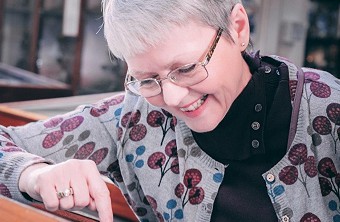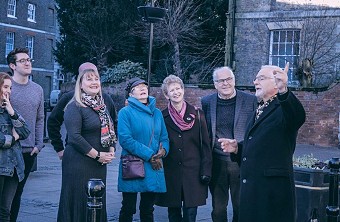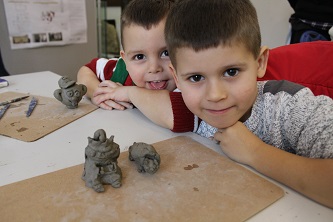
 Back to Blogs
Back to Blogs
24 July 2024
Forgotten Photographer
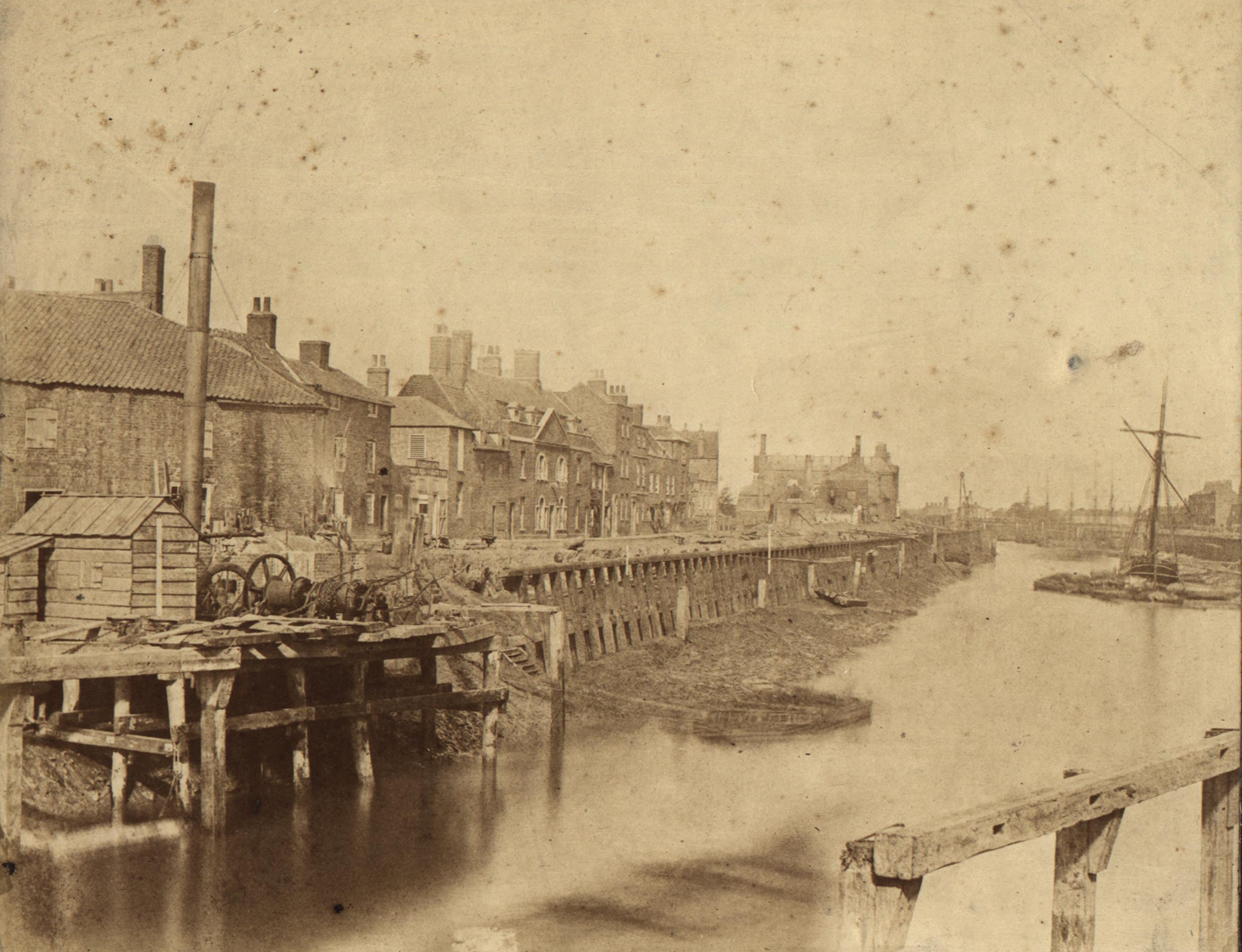
Thomas Craddock
(1811 - 1893)
When the subject of early photographs of Wisbech is raised the name of Samuel Smith readily springs to mind but not that of his great friend and collaborator, Thomas Craddock. The latter is more often remembered as a co-author, with Neil Walker, of the History of Wisbech which was published in 1849.
Thomas Craddock was the son of Samuel and Sarah Craddock who were recorded in the 1841 Census as Keeper and Matron of the House of Correction on South Brink. Thomas was recorded as a Schoolmaster - Pigotts Directory of 1839 gives his academy as being near the Cattle Market.
On 10 December 1850 Craddock was admitted as a mature student at Queen's College, Cambridge. He matriculated in Michaelmas Term 1851, and graduated with a B.A. in 1856. Whilst in Cambridge he continued with his photography and Queen's College still has a copy of his photograph of the Mathmatical Bridge taken in 1855.
Smith’s earliest dated photograph is in 1852 and it is possible that he may have been working earlier than this. However, what is not in doubt is that Craddock was certainly exploring the new science of photography in 1851 as he exhibited nine photographs, mainly of Peterborough, at the Great Exhibition. Gardiner’s History, Gazetteer & Directory of Cambridgeshire, 1851, which stated that Craddock had been
honoured with the correspondence of Sir David Brewster, from the superior talent and chemical research displayed by him in the calotype process applied to the production of pictures by the Talbotype system.
Brewster was a famous natural philosopher who, among other things, developed the refracting stereoscope.
Interestingly the same publication credits Craddock as the anonymous author of the 1833 'History of Wisbech' ; however, it was more likely that Thomas Steed Watson was actually the author.
Both Smith and Craddock were on the committee for the Public Hall Exhibition, February 1853, the former exhibiting some of his microscopes, whilst Craddock showed some choice calotypes and richly illuminated manuscripts.
In June 1854 at the exhibition of photographs from the Society of Arts of international architecture and scenery, also shown were some beautiful examples of this locality, taken by Mr. T. Craddock and Mr. S. Smith, which were very much admired.
Further evidence of their collaboration is in their appearance in one another’s photographs. Craddock appears in Smith’s view of Leverington Hall and also a prospect of Crowland Abbey. In Craddock’s photograph of Webster’s Mill, Samuel Smith can be seen lounging against the wall.
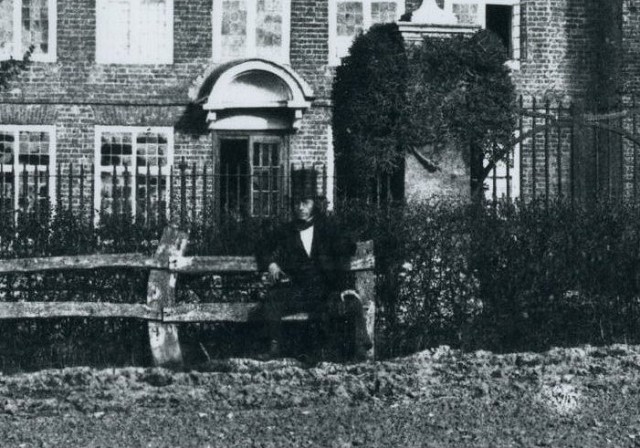
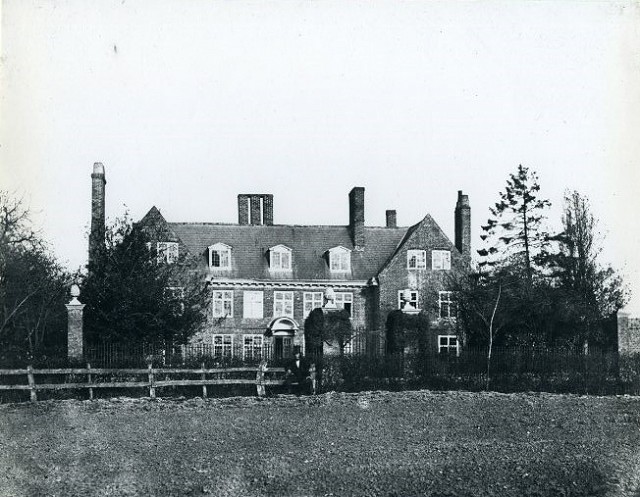
Thomas Craddock’s prowess as a photographer is witnessed by the report that Prince Albert had requested a copy of his calotype of Ely Cathedral which had been exhibited in London. The Royal Collection contains a carbon print of this image which was produced by Gustav William Henry Mullins in 1893.
Craddock seems to have abandoned photography and pursued his literary interests when he moved to Liverpool where he later became Professor of Literature at Queen’s College. Not long after the death of his friend Samuel Smith, Thomas Craddock died aged 82 on 9 April 1893.
Photos above
Leverington Hall
Photographed by Samuel Smith, 28 April 1853
Seated on the bench is the figure of Thomas Craddock
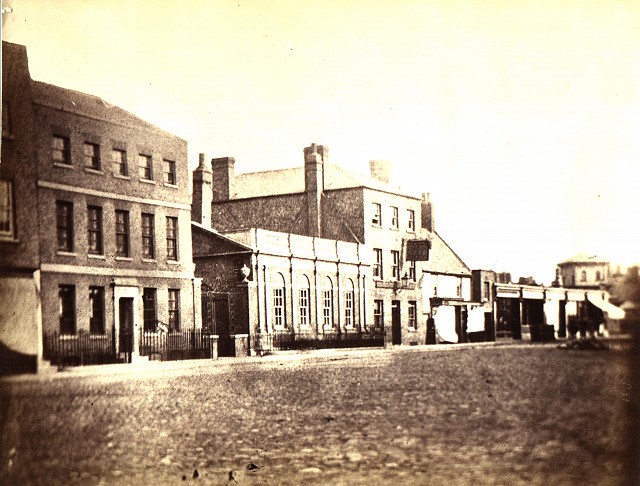
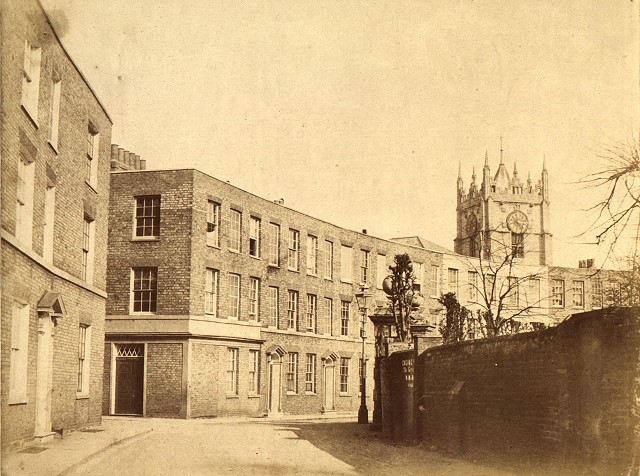
Left - Old Market, Wisbech, c.1850-60
The one storey building in the centre is Messrs. Exley's counting house which was taken down in 1877 to be replaced by Gurney & Co.'s new bank (later Barclay's Bank)
Right - Ely Place, Wisbech
Photographed by Thomas Craddock, early 1850's
To the extreme right can be seen the upper storey of the first Ely Place Baptist Church. The gateway led to the fire engine house which was located in the Castle grounds.
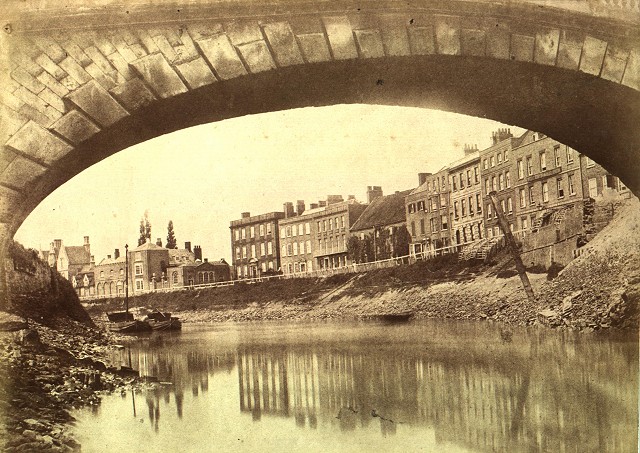
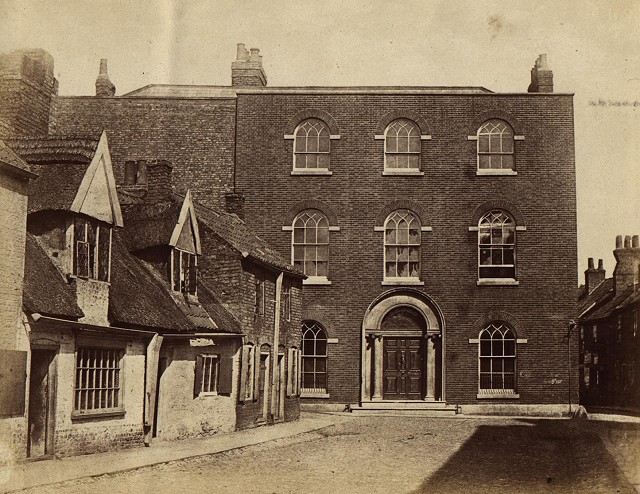
Left - North Brink, Wisbech
Photographed by Thomas Craddock, early 1850's.
A fine view of the North Brink taken from beneath the old stone bridge.
Right - Hill House, Upper Hill Street, Wisbech
Photographed by Thomas Craddock, early 1850's.
Formerly the residence of Henry Leach, first Mayor of Wisbech, the house was later converted into Racey's Arcade. The arcade was removed in the late 1920's and replaced by the Empire Theatre which opened on 22 November 1932.
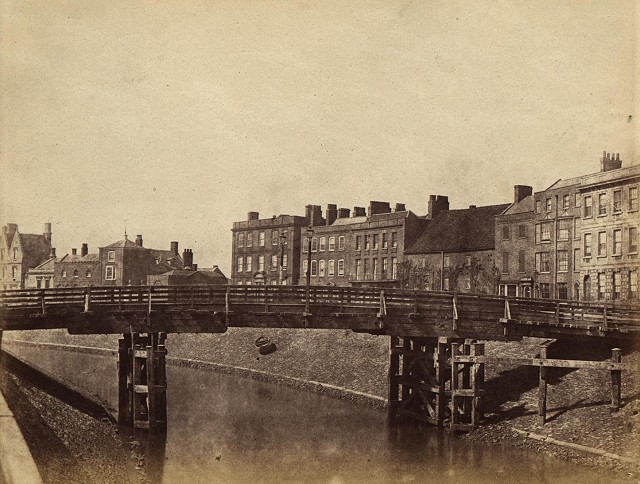
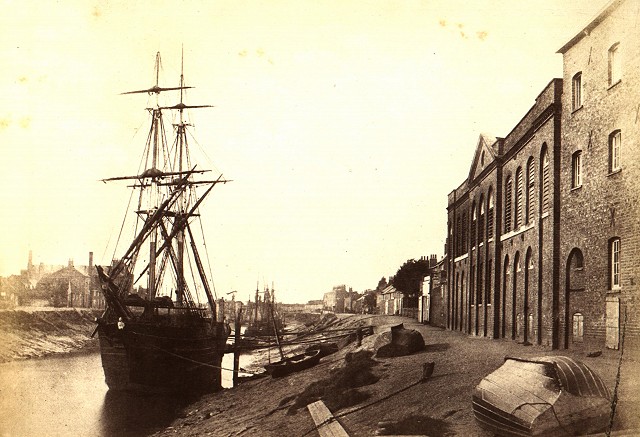
Left - Temporary Wooden Bridge, Wisbech
Photographed by Thomas Craddock, c.1855.
Right - Nene Parade, Wisbech
Photographed by Thomas Craddock, early 1850's.
The shallow banks of the River Nene are clear to see in this view of Nene Parade. A few years later the banks were piled giving the steep sided quays that are so familiar today. To the right can be seen the fine buildings of the Union Brewery which was owned at this time by Messrs. Boucher & Jecks. The business was purchased in 1866 by George W. Mills of Downham Market and subsequently became known as Mill's Brewery. The business was purchased by Messrs. Hall, Cutlack and Harlock of Ely in 1939 and shortly afterwards brewing ceased . During the Second World war part of the building was used to house prisoners of war. The brewery was demolished to make way for the court house and police station which was opened in 1957.
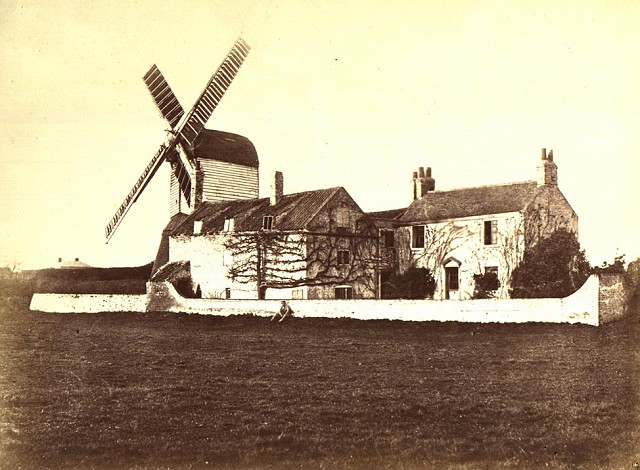
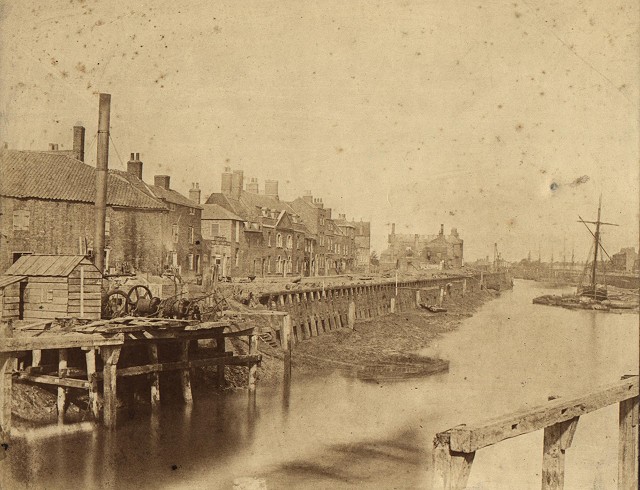
Left - Webster's Mill, West Parade, Wisbech.
Photographed by Thomas Craddock, early 1850's.
The view of the mill taken from the field between the Leverington Road and West Parade includes the seated figure of Craddock's great friend and collaborator, Samuel Smith.
Right - North End, Wisbech
Photographed by Thomas Craddock in 1853.
Shows the piling in progress along the quay. This was replaced in the 1950's by steel piles.
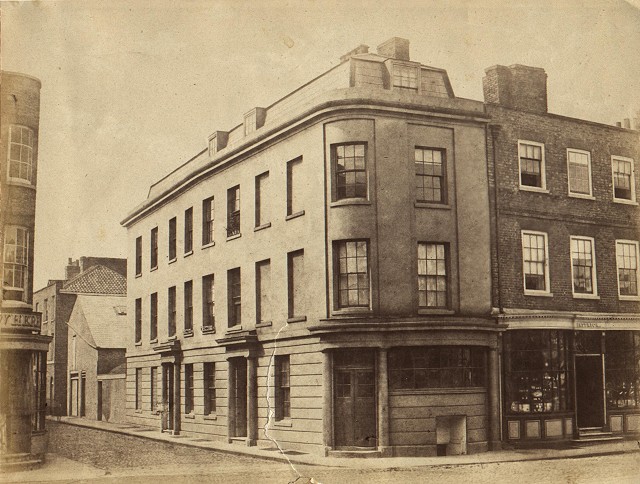
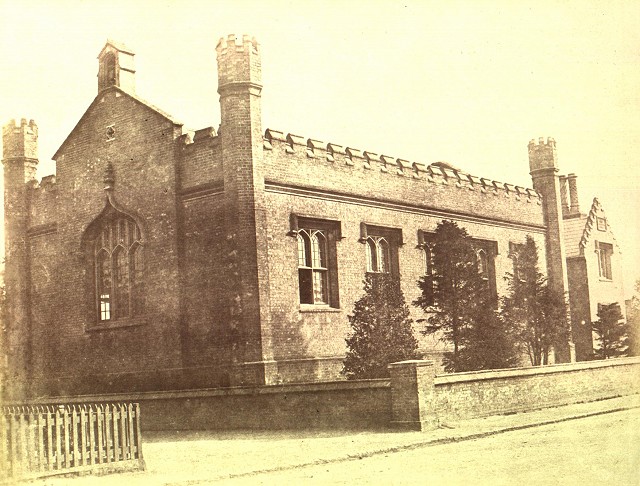
Left - Junction of Market Street and Market Place, Wisbech.
Photographed by Thomas Craddock, early 1850's.
Shows Messrs. Wales & Wallace's surgery; on the right is the shop of Thomas M. Pattrick, silversmith, jeweller and watchmaker who also acted as an agent for the Norwich Equitable fire & life office.
Right - Boy's British School, Victoria Road, Wisbech.
Photographed by Thomas Craddock, early 1850's.
Erected in 1840 at a cost of around £2,000 the average attendance in 1851 was 250. The master's house, seen to the right, has since been demolished and the school converted into flats.
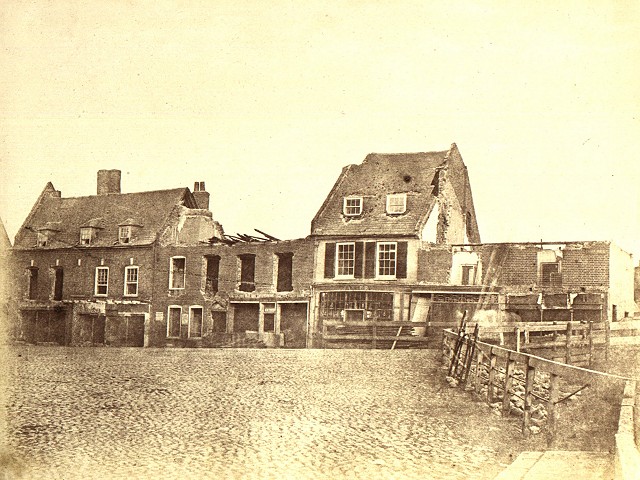
Left - Cornhill, Wisbech.
Photographed by Thomas Craddock, early 1850's.
The sad demise of the properties which led to the foot of the old stone bridge which were to be swept away to enable the construction of the iron swing bridge. On the right can be seen the shell of the building which had been the post office.
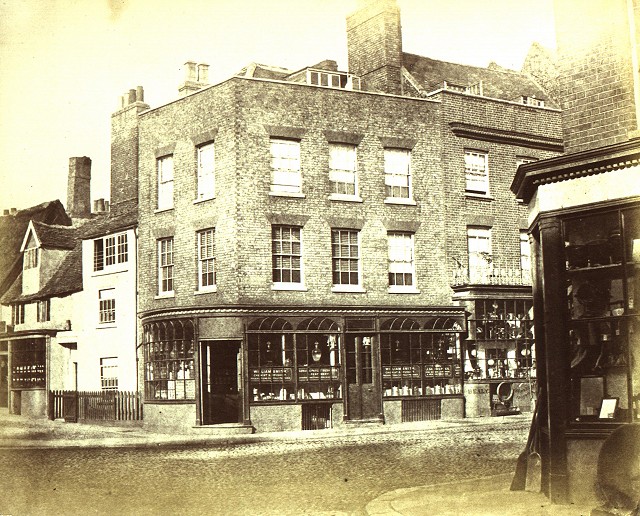
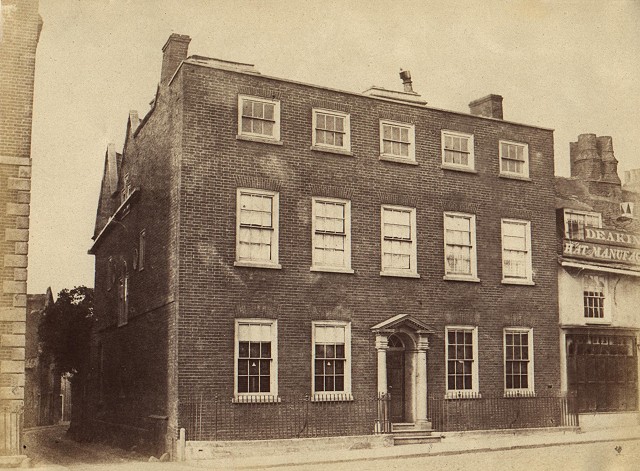
Left - Junction of High Street and Bridge Street
Photographed by Thomas Craddock, early 1850's.
The wonderful shop frontage of William Smith, chemist & druggist, is in marked contrast to its modern equivalent. Smith was a director of the Museum and was considered a local authority on fine art and his collection of Staffordshire figures, donated by his daughter in 1900-1, are on display in the Townshend Room.
Right - Bridge Street, Wisbech.
Photographed by Thomas Craddock, early 1850's.
This fine Georgian house was aquired as an office by Richard Young a local shipping magnate and five times Mayor of Wisbech. The house was demolished to make way for the present post office which opened in 1887.
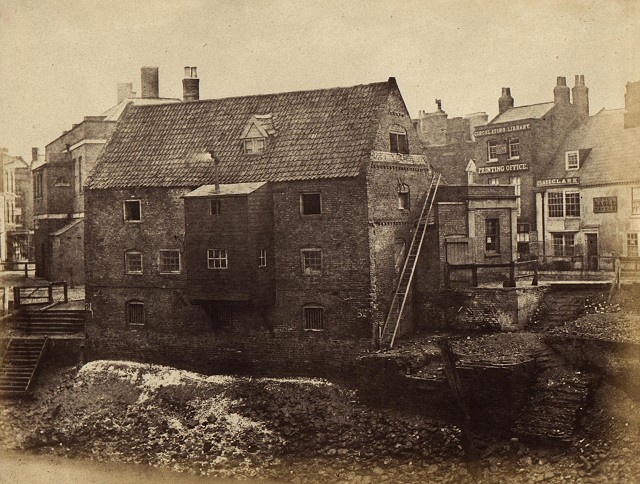
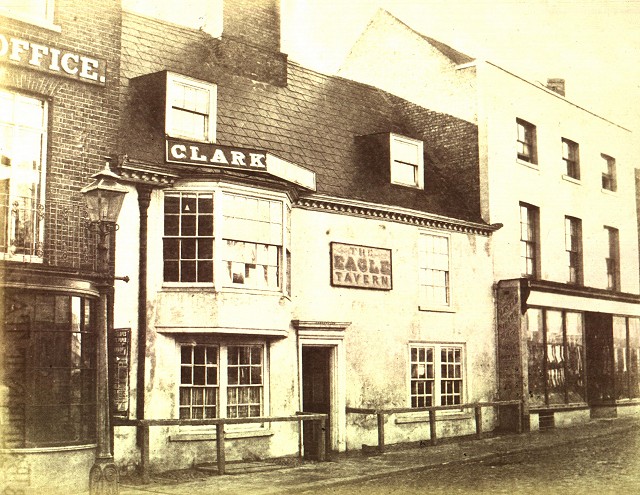
Left - Lawson's Granary Bridge Foot, Wisbech
Photograhed by Thomas Craddock, early 1850's.
This, along with many other buildings in the vicinity, was demolished a few years later to make way for the construction of the Iron Bridge.
Right - The Eagle Tavern, Bridge Street, Wisbech
Photographed by Thomas Craddock, early 1850's.
William Thirkel kept the Spread Eagle in 1853 before it was taken over by James Clark who presumably altered the name to Eagle Tavern. Clark was reputed to be very deaf and his usual reply to his customers was "Yes, thank you , sir I don't mind if I do. Mine's a three penn'orth of gin"! By 1895 the house was once again known as Spread Eagle and in 1932 was refronted.
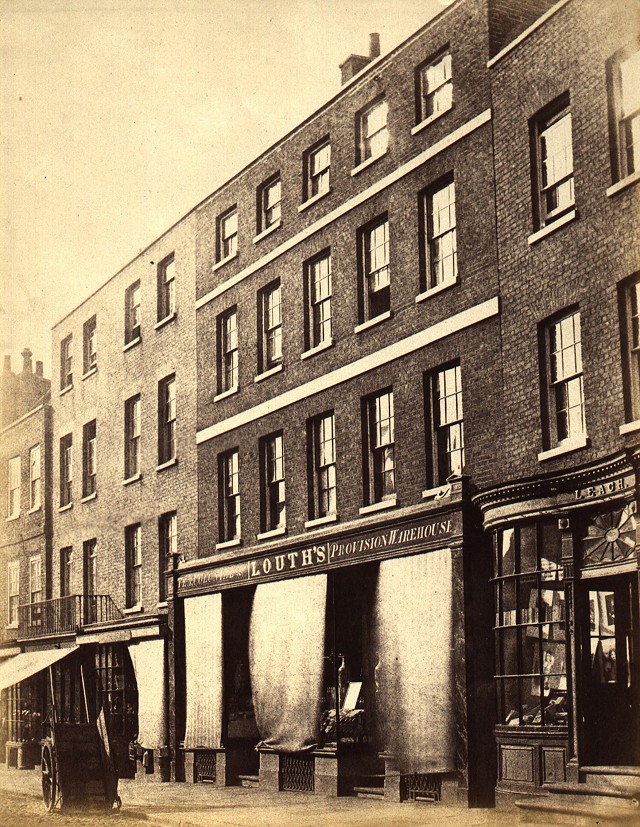
Above - High Street, Wisbech.
Photographed by Thomas Craddock, early 1850's.
In this fine view the blurred image of the blinds on Louth's shop gives an indication of the long exposure times required for producing calotype photographs.
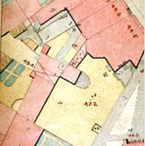
Supporting the museum
To maintain and grow our collections we need your contributions, please support us by donating today.





